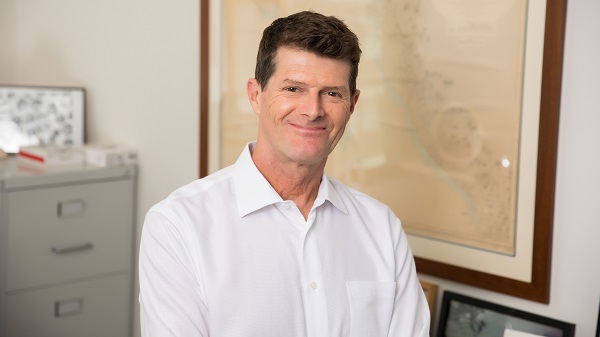The quest to find common causes of autoimmune disease
At first glance, Type I diabetes, Sjögren’s syndrome and rheumatoid arthritis don’t appear to have much in common. Not only are they distinguished by quite distinct sets of symptoms, they also primarily affect different parts of the body – cells in the pancreas, moisture-producing glands and joints, respectively.
Age of onset varies, too. Type I diabetes tends to rear its head in childhood; Sjögren’s syndrome and rheumatoid arthritis are most commonly diagnosed in middle or old age.
Nonetheless, they’re all autoimmune diseases: the consequence of an immune system attacking tissues in the body it’s supposed to protect. Some 12% of people will be affected by at least 1 autoimmune disease, and once such afflictions appear, they stick around for life, says Professor Chris Goodnow, executive director of the Garvan Institute of Medical Research.
“They really impact on quality of life, even with the various new treatments today.”

How and why autoimmune diseases emerge is mostly a mystery – but this will change if Goodnow and his colleagues at Garvan’s Hope Research program achieve their goal. By focusing on around 40 common autoimmune diseases, they’re hunting down overlapping root causes behind the entire suite of disorders.
The case for a common cause
It may seem fanciful that the mechanism that causes the dry eyes and mouth of Sjögren’s syndrome also generates pain and inflammation in rheumatoid arthritis, but there’s significant comorbidity between the two. Indeed, around a quarter of people with an autoimmune disease are at risk of developing another.
So instead of focusing on nailing the cause of one autoimmune disease at a time, Goodnow says, researchers should think of them as variations on a theme.
He likens current beliefs about autoimmune diseases to how doctors once considered cancer. In the mid-20th century, physicians thought each cancer type stemmed from a different cause.
“We now know cancer is caused by somatic variation. But for autoimmune diseases, in terms of the underlying mechanism causing the immune system to attack some parts of the body, we’re still back in the 1960s.”
In a healthy immune system, B cells and T cells patrol the bloodstream, searching for foreign pathogens and particles. Normally, the cell division process that generates these and other cells incorporates “checkpoints” – safety mechanisms that ensure progeny cells don’t make autoantibodies and attack the host.
Should one checkpoint fail, it’s not usually a big deal – there are backups further down the line. But sometimes, and for reasons as yet unknown, they don’t work. And with the checkpoint system defunct, rogue clones are free to proliferate, secrete autoantibodies and wreak havoc on the body.
For this to happen, 3 elements must be involved.
Clues in DNA
The first, and most studied, component is inherited genetic variants. Most immune disorders have a strong genetic component; for instance, many genes each exert a small effect that nudges the risk of developing Sjögren’s syndrome up or down.
A clue to a common genetic predisposition is a subset of DNA variants that pop up in the major histocompatibility complex gene region in almost all autoimmune diseases.
Layered atop inherited DNA differences is the second vital part: somatic DNA changes. To find these acquired defects, researchers must first locate rogue clones – and this is not a simple task. While rogue clones can inflict immense suffering, they’re usually vastly outnumbered by other immune cells in the bloodstream.
Single cell sequencing helps separate rogue clones from their well-behaved counterparts. This new technique sorts cells into clusters, then analyses DNA and RNA in each to determine somatic variation and gene transcription.
“For instance, we fished out rare cells that are making damaging rheumatoid factor autoantibody,” Goodnow says. “Then we went inside those cells to see how they managed to evade all the checkpoints that would normally stop them.”
Environmental elements
The third crucial element to autoimmune disorders is an environmental trigger, such as a viral infection.
A prime example is hepatitis C. Before the new tranche of antiviral therapies was developed, hepatitis C was a lifelong infection. But something about harbouring the virus meant around half of chronically infected patients also developed rheumatoid factor autoantibodies.
Now antiviral therapies effectively cure hepatitis C in a matter of weeks. “And just by getting rid of the virus, what we’re finding is that the rogue clones don’t go away, but the autoantibody they make decreases enough that they stop having rheumatic symptoms,” Goodnow says.
The million-dollar question is: to what extent do inherited DNA, somatic variation and environmental triggers influence all autoimmune diseases?
“That gets back to why we’re doing the Hope Research program,” Goodnow says.
“A lot of these disorders are extremely painful and very limiting. Better management would be a great relief to a lot of people, not to mention their family and those that support them as well.”
Updated 3 months ago